This was published 3 years ago
‘He’s very nice. The only problem is ...’: chef Marco Pierre White on Jock Zonfrillo
He’s one of Australia’s most celebrated chefs, with a drug-fuelled backstory to rival that of Anthony Bourdain, a staunch commitment to Indigenous ingredients and a Scottish gift for storytelling. But is the Jock Zonfrillo tale too incredible to be true?
By Tim Elliott
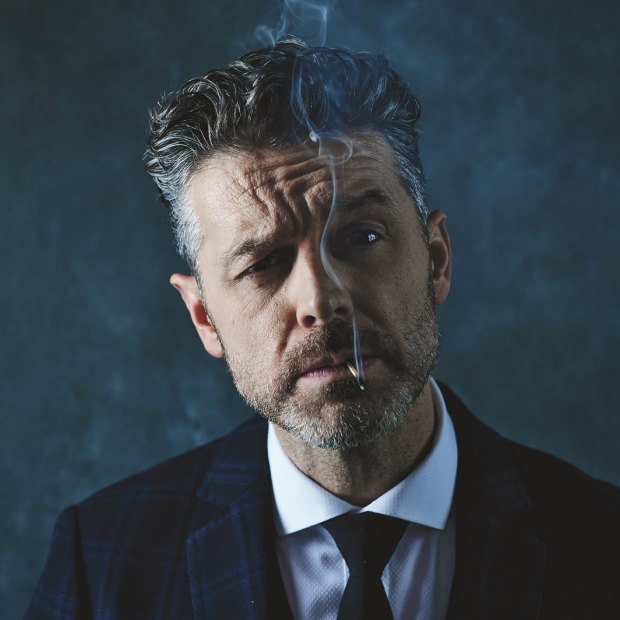
“There’s a saying, ‘Why join the navy when you can be a pirate,’ ” Zonfrillo says. “It’s like, ‘You don’t need to confine yourself to rigid rules or anything.’ ”Credit: Nic Walker. Grooming by Desiree Wise
In early July, the celebrity chef Jock Zonfrillo released a limited-edition range of handcrafted worry beads. Worry beads are one of Zonfrillo’s signature accoutrements. He inherited the habit from an old friend, the late food writer A.A. Gill, who died in 2016, and whose wife bequeathed Zonfrillo a special set. “I’ve now got hundreds of different types,” Zonfrillo tells me when we meet in Melbourne on the set of MasterChef Australia, where he is a judge. “I make them myself, from bones or wood or deer horn.” Until recently he kept them hidden in his pocket, rolling the beads over, one at a time, a practice he finds “helps calm my mind, and make it possible to do this show, where you have hundreds of people watching, waiting for me to f… up”.
Last year, however, Zonfrillo openly wore some on air, sparking a flurry of interest from viewers. In response, he produced his own designer line under the moniker Caim, with beads hand-fashioned from jade, sea sediment jasper, and natural blue amazonite. No two sets are the same, and each is finished with a bead in the shape of a skull. They aren’t cheap: the most expensive costs $495 – $5 of which will go towards Beyond Blue. But according to the press release, their benefits can scarcely be overstated. “It’s not religious,” Zonfrillo declared in the release . “It’s an invisible circle of protection that you draw around your body with your hand, to remind you of being safe and loved, even in the darkest times.”
Zonfrillo, whose real name is Barry, was born in Scotland but has been in Australia since 2000. He is charming, smart and good-looking, with tousled hair and a roguish grin. Cooking shows and glossy magazines can’t get enough of him. In May 2020, the American singer Katy Perry flirted with him during an episode of MasterChef, earning Zonfrillo nicknames like “the Hot Scot” and “Hot Jocklate”. He wears tailored suits and vests with pocket chains, and brings to the program a raffish swagger, a nonchalance that belies his formidable talent.
Before it closed in 2020, leaving a trail of creditors, Orana, the restaurant he opened in Adelaide in 2013, made its name using Australian native ingredients, serving up such esoteric delights as pearl meat with Dorrigo pepper and Coorong mulloway with native cherries and sea parsley. Critics swooned; the awards rained in. In 2018, Orana was named Gourmet Traveller’s Restaurant of the Year; in 2019, The Sydney Morning Herald and The Age’s Good Food Guide gave Orana three hats, its highest ranking. Food critics JiIl Dupleix and Terry Durack described Zonfrillo’s food as “healing”. When I speak to the businessman Mark Carnegie, a friend of Zonfrillo’s and one of his investors, he tells me that eating at Orana was “transformative”.
Zonfrillo, who is 44, is full of brio and conviction, and yet is frequently contradictory. As he told me at MasterChef, he is not interested in “celebrity status”. Yet he has regularly taken part in food documentaries and TV series, including for The Discovery Channel, Network 10, Channel Seven and SBS. He has also appeared in many promotional videos as a brand ambassador for Lavazza coffee and for Porsche, including a 2020 clip titled Jock Zonfrillo foraging for native Australian ingredients with the Porsche Cayenne E-Hybrid.
He is now among the most recognised chefs in Australia. Certainly, his work on MasterChef has made him an influential figure, with the capacity to make or break careers. Now he has released a memoir, Last Shot, a gripping tale of drug abuse, violence and kitchen chaos, much in the vein of Anthony Bourdain’s 2000 global bestseller Kitchen Confidential. “This is a story of hope,” his friend Jimmy Barnes writes in the introduction. “A remarkable tale of a remarkable man who took the hard, hard road and made it his own.”
Yet according to a number of people I speak to, many of the stories that Zonfrillo tells about himself in the book and elsewhere differ markedly from their own recollections of events. “Nothing Jock says is plausible,” says one former colleague. Another describes him as a “famous bullshit artist” who “burns people and moves on”.
Of particular interest is renowned British chef Marco Pierre White, with whom Zonfrillo worked in the 1990s. Zonfrillo mentions White 159 times in his book and refers to him as “a father figure” who “saved my life”.
“Jock is not a bad man,” says White, over the phone from London. “He has a natural intellect and he’s very nice. The only problem is that almost everything he has written about me is untrue.”
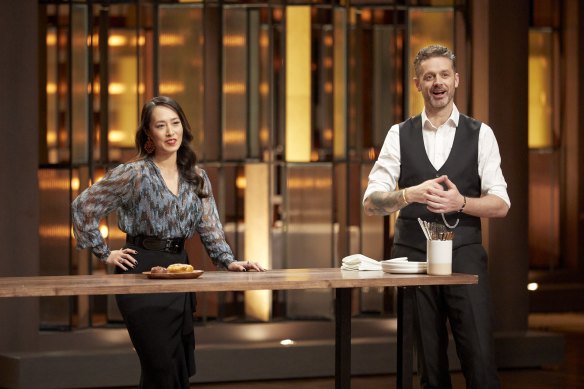
Zonfrillo with MasterChef co-host Melissa Leong.
MasterChef Australia is filmed in Centenary Hall, a renovated art deco pavilion at the Melbourne Showgrounds. For those who have never tuned in, the show features contestants from around Australia who take part in a series of challenges, before three judges, that test their food acumen and cooking skills. A process of attrition reduces the field until there emerges a winner – the MasterChef – who receives $250,000, professional training from leading chefs, and the chance to publish their own cookbook.
Now in its 13th year, the show has been a ratings bonanza for Network 10, despite the occasional controversy, including revelations in 2019 that long-time judge George Calombaris’s restaurant empire had underpaid its staff by $7.83 million. In 2020, the judging panel was refreshed, with Matt Preston, Gary Mehigan and Calombaris replaced by the food critic Melissa Leong, restaurateur Andy Allen (himself a MasterChef winner, in 2012), and Zonfrillo. “Hosting MasterChef would be one of the most sought-after gigs in food media in Australia,” says Callan Boys, food writer for The Sydney Morning Herald and The Age. “You can never underestimate the power of TV to propel someone’s career, especially in cooking.”
When I visit the set one morning in May, shooting is well underway. Today is what’s known as a “masterclass”: instead of the contestants competing, Zonfrillo and Allen are going head-to-head, each preparing a dish using a “hero” ingredient: butter for Zonfrillo, tahini for Allen. They have 10 minutes to finish, and are timed by an oversized stopwatch suspended from the ceiling. The gantry above them is crowded with this season’s contestants, whose heckling adds a gladiatorial edge to proceedings. As the minutes tick by, Allen looks increasingly harried, all pots, pans and flashing hands, while Zonfrillo remains calm and collected, like he’s putting together a lazy Sunday brunch. With the deadline looming and the gantry counting down – “five, four, three …” – it’s clear Zonfrillo will finish first. He’s barely raised a sweat creating what is soon judged to be the best dish. Allen looks ready for a Bex and a good lie-down.
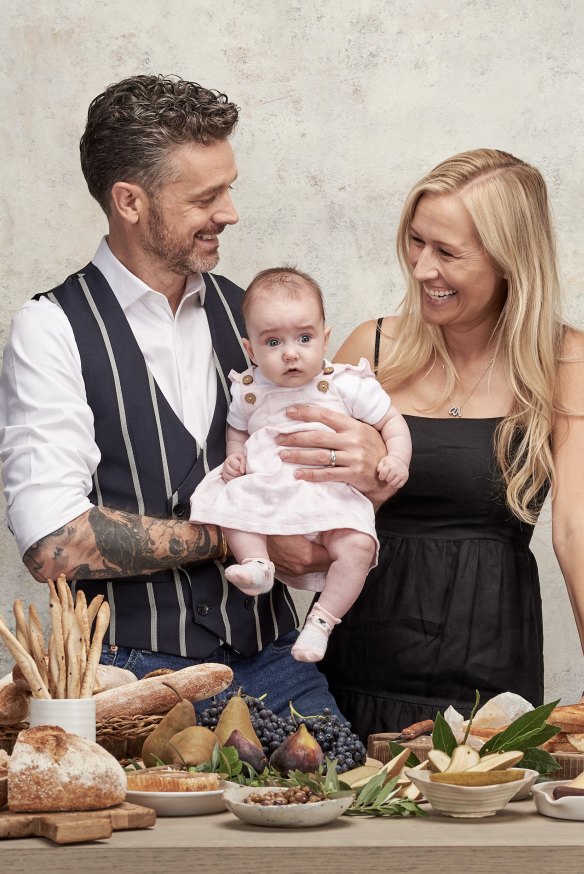
Zonfrillo with baby Isla and wife Lauren Fried.Credit: Courtesy of Jock Zonfrillo
The following morning I catch up with Zonfrillo and his wife Lauren Fried, a marketing expert and panellist on the ABC TV program Gruen. The couple live in an elegant terrace in Carlton in Melbourne’s inner north, with their two children, three-year-old Alfie and nine-month-old Isla. When I walk in, Zonfrillo is sitting at the kitchen table with Isla, reading Disgusting McGrossface, about a troll-like creature who licks mud off his shoes and eats a side serve of worms with every meal.
The kitchen isn’t especially big, but it references Zonfrillo’s twin passions, with Indigenous artwork on one wall (a pair of paintings by the South Australian artist, Jacob Stengle) and two large fridges on the other. There is also a large red deli-meat slicer, and a cornucopian pantry that a person could walk into wearing a head torch and never be seen again. “I cook a lot at home,” he says. “We eat a lot of pasta. I use dried pasta, hand-made pasta, both. The machine has, like, 30 different dies, to make penne and all the different shapes of pasta under the sun.”
Zonfrillo is an engaging storyteller, padding about the kitchen in a pair of socks, wheeling out anecdotes in a chewy Glaswegian brogue. He talks about his workaholism, and how it wrecked his previous relationships (Zonfrillo has had two previous marriages, with a child from each), and about his love of learning. “Coffee is a good example,” he says, making me a flat white. “I’m an ambassador for Lavazza, and I’ve done all the barista training, and I do that because I’m just really f…ing interested in it, you know?” (Swearing is another of Zonfrillo’s passions: in his book, the word “f…” appears 206 times, and “shit” 101 times.)
He is refreshingly unguarded: he breaks down when discussing his late friend A.A. Gill, and becomes visibly irritated when talk turns to his critics, some of whom have accused him of leveraging his advocacy of Indigenous food for personal gain. “There’s an element of f…ing guilt for them that they’ve done nothing,” he says.
At one point, I ask him to explain his tattoos, which have generated much speculation online. The tattoos, which cover his right arm, feature a pig, because pork is one of his favourite meats; the skull of an English longhorn cow, because he thinks they are beautiful; and thistles, for Scotland. There’s also a skull and crossbones. “There’s a saying, ‘Why join the navy when you can be a pirate,’ ” Zonfrillo says. “It’s like, ‘You don’t need to confine yourself to rigid rules or anything.’ It’s actually much more fun to bend the rules a little.”
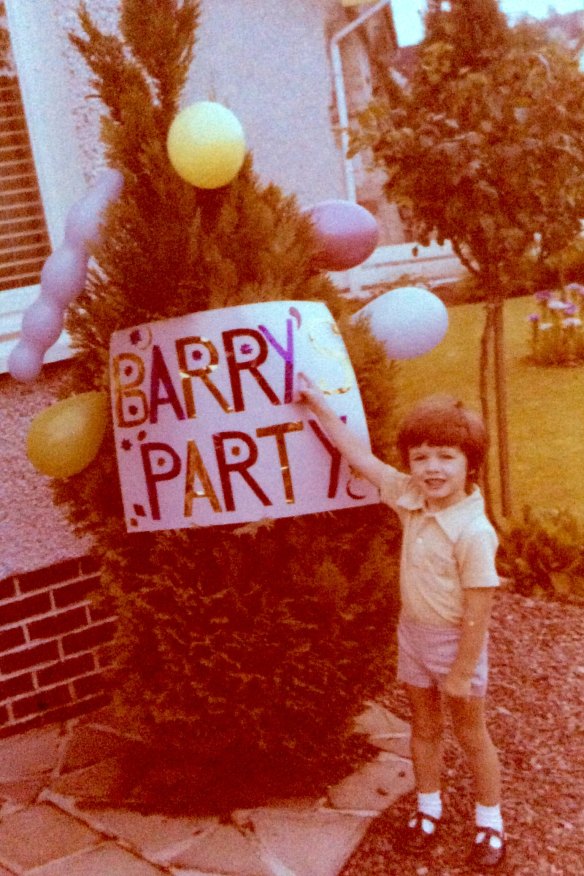
As a boy, Jock Zonfrillo, whose real name is Barry, gravitated towards the Italian side of the family, because “it was so much livelier” - and had a strong food culture.Credit: Courtesy of Jock Zonfrillo
Jock Zonfrillo was born in 1976, in Ayr, a port town on the south-west coast of Scotland. His father Ivan Zonfrillo was a barber and the son of Italian immigrants; his mother, Sarah, the daughter of farmers. Jock had a sister, Carla, who was a couple of years older. It was a happy household, but strict.
As a boy, Zonfrillo gravitated towards the Italian side of the family, because, as he writes in his book, “it was so much livelier”. It also had a deep food culture: his mother would cook mince and potatoes, but when he went to his nonno’s house, there were things like lasagne and cacio e pepe. The love that accompanied these dishes kindled in Zonfrillo an affinity with food and an appreciation of its unique ability to bring people together.
At the age of 12, Zonfrillo spotted an expensive racing bike that he wanted to buy. His parents wouldn’t pay for it, so he looked for work in local shops, where he was told he was too young. Meanwhile, Carla was waitressing in a local restaurant, where the owner needed someone to wash the dishes. Zonfrillo got the job. “It was [an] exciting environment to be in,” he writes in Last Shot. “The chefs would be at one end of the kitchen and I’d be at the other, and they’d throw these pans straight off the stove into the sinks. Like, just launching these red-hot, sizzling missiles past my head.”
Zonfrillo was there three weeks when his boss, David Auchie, asked him to step in for one of his chefs, who’d had a motorbike accident. He agreed, but on two conditions: that he got a pay rise and that he never had to wash dishes again. For Zonfrillo, who was bullied at school for being a “dago” and frequently in trouble for fighting, the collaborative energy of the kitchen – the esprit de corps and sense of purpose – was a revelation.
After a year, he got another job in a restaurant across town. The two French chefs in charge created “more extravagant dishes”, as he writes. They also introduced the then-13-year-old to cocaine, doing lines during service; afterwards, they would smoke joints and talk shop. Going by the book, Zonfrillo’s early years were as dangerous as they were eventful, and full of outlandish twists – a real-life Trainspotting meets Lock, Stock and Two Smoking Barrels. At the age of 11, he and two friends stole some cars. The plan went awry and Zonfrillo fled on foot, chased doggedly by an old copper who turned out to be “the senior long-distance f…ing champion of west Scotland”. He nonetheless threw off the policeman, only to be caught by a group of off-duty firemen who happened to roll out of a pub just as he ran by.
Another time, when he was 13, he and four friends, including a kid called Billy, were stopped by a car of older boys. They got into a yelling match. The older youths piled out of the car, pulling knives. “We scarpered,” Zonfrillo writes, “legging it up the road as fast as we could … They were gaining on us, and someone yelled that we should split up. Three of us went one way and Billy and I the other. We ducked down a side road and peeled up the side of a church. I was in the lead, Billy was right behind me, and just behind him I could hear these five armed f…ing strangers gaining on us.”
He goes on: “The churchyard ended at a big iron gate with a coil of barbed wire running across the top. There was nowhere to go but over it.” He leaped over the barbed wire, slashing his hands. Billy started climbing the gate behind him; Zonfrillo reached down to pull him up, but his hands were “shredded … blood everywhere, and I couldn’t get a grip”. The older boys caught up, dragged Billy down and beat him, as Zonfrillo stood, helpless, on the other side of the gate.
The next day, he read in the newspaper that Billy had been stabbed to death. “After that, I started to get more serious about work,” he writes. “I could be a lad … stealing from shops, likely to get a chib in the back for no f…ing reason – or I could hang out with these cool-as-shit French guys and learn about food. It wasn’t really a choice, when it came down to it.”
At 15, Zonfrillo left school and took an apprenticeship at the Turnberry Hotel, an upscale estate south of Ayr. The Turnberry (which is now owned by Donald Trump), offered the toughest chef training in Scotland, he writes; at one stage, Zonfrillo was ambushed in the freezer by a disgruntled sous chef, who bashed him with a frozen haddock, “spraying blood everywhere … the floors, the walls, the produce”. He spent the rest of his shift wiping his blood off the walls. In order to cope, he began taking drugs, including heroin. Before long, he was addicted.
Zonfrillo was clearly talented. In 1993, when he was 16, he won Young Scottish Chef of the Year. He then got a job at the Arkle, a Michelin-starred restaurant in Chester, the historic city in north-west England. The Arkle provided staff accommodation, but his wages didn’t cover his heroin habit, so he started selling cocaine, pot and pills. Zonfrillo boasts in the book that before long he was making “thousands of pounds” a week, and was one of the best-known dealers in the city. In 1994, however, he was sacked from the Arkle for losing his temper. He worked briefly for a “regular restaurant”, cooking noodles and deep-fried chicken, but soon became impatient for more Michelin-star acclaim. So at age 17, he set his sights on London, and the man who was at the time the biggest name in food: Marco Pierre White.
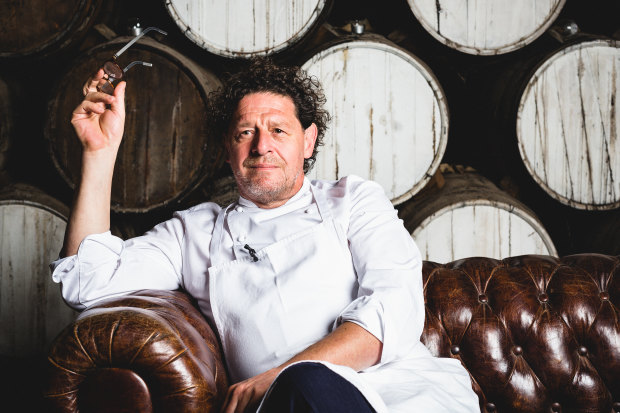
British chef Marco Pierre White says of Zonfrillo, “He’s very nice. The only problem is that almost everything he has written about me is untrue.”Credit: Andre Castellucci
Born in Leeds in 1961, White had risen quickly through some of Britain’s best kitchens before heading out on his own in 1983. A large, brooding figure with a mane of tangled hair, he was famous for placing unremitting pressure on his staff. In 1994, at age 32, he became the first British chef, and at the time the youngest ever, to win three Michelin stars, at The Restaurant Marco Pierre White at London’s Hyde Park Hotel. Merely passing through White’s kitchens conferred a certain status; becoming friends with him was, in food circles at least, to be somewhere close to God.
“Everyone wanted to be Marco Pierre White,” says Donovan Cooke, who worked as head chef in two of White’s restaurants, including at the Hyde Park Hotel, in the late 1980s and 1990s. “I f…ing idolised him.”
Zonfrillo has for years named White as his biggest influence. In the book he goes further, claiming to have had a special relationship with him, something akin to father and son, and that over the years that he worked for him, White’s restaurant became like a “home away from home. A family.” White recalls it differently. “I never saw much of [Zonfrillo], and he worked in my kitchen for a very short time.”
“I never saw much of [Zonfrillo], and he worked in my kitchen for a very short time.”
In the book, Zonfrillo describes turning up at White’s Hyde Park restaurant in 1994 with nothing but his knives and knocking on the door. As he tells it, White answered, then led Zonfrillo into his office, where he conducted a cryptic interview, asking at one stage if Zonfrillo’s mother would be proud of him. (White doesn’t recall this conversation.) Zonfrillo then writes how he introduced White to a superior method of making tomato concassé, and that White was very appreciative. (White says this is untrue.) In a particularly affecting section of the book, Zonfrillo writes about being homeless for the first three months of working for White and how he would sneak back into the restaurant at night to sleep in the changing room. When White found out, he apparently found him accommodation and advanced him some money. (White doesn’t remember Zonfrillo ever being homeless, and says he never found him accommodation nor loaned him any money.)
Zonfrillo also claims that White took him fishing at night, several times, as a sign of respect and affection. “[Marco] might have been bollocking you all through service,” he writes, but afterwards “he’d come up and put his arm around you and say, ‘We’re going fishing tonight.’ ” White says he never took Zonfrillo fishing.
At one stage Zonfrillo describes how, while he was working for White, he would do stages in other prominent restaurants. (A stage is when a chef works briefly, for free, in another chef’s kitchen to learn new techniques.) White says this is “completely false. I didn’t allow my boys to stage.” Zonfrillo says he staged at the three-Michelin-starred La Tante Claire, under owner and head chef Pierre Koffmann. While it would not be unusual for a young staging chef to go unnoticed, when I contact Koffmann, he tells me he’s never heard of Zonfrillo, “and Jock is not a name that is easily forgotten”. Other parts of his past are equally hard to verify. Zonfrillo says that in the late 1990s, White rang him up and found him a job at Les Saveurs, a restaurant he owned in Mayfair. White says he cannot remember offering Zonfrillo the role, nor Zonfrillo ever working there. Richard Turner, a good friend of Zonfrillo’s who was working at Les Saveurs at that time, also says he has no memory of him being there.
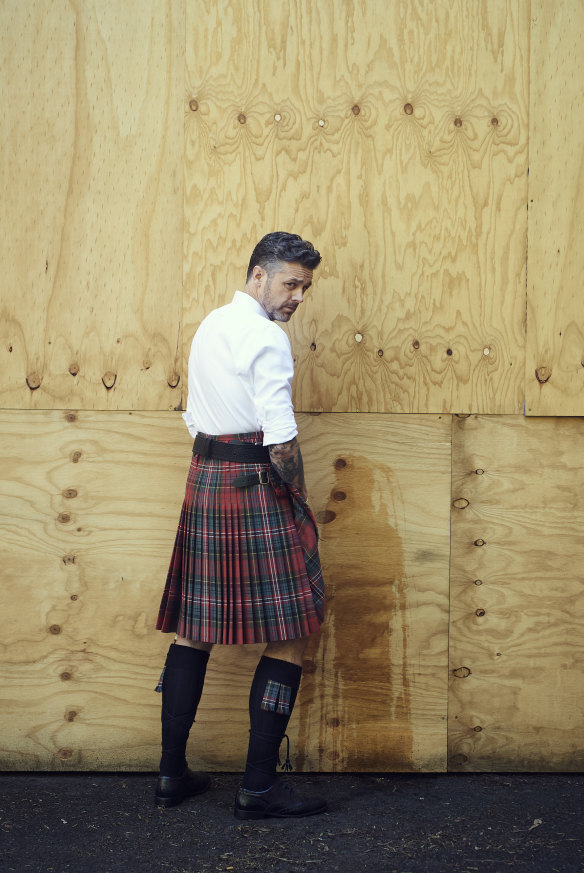
Zonfrillo writes that during his heroin addiction, he’d shoot up at work in restaurant toilets, vomit, then return to his station and work as normal.Credit: Nic Walker
In 1996, at age 20, Zonfrillo travelled to Australia, looking for adventure. After some unsatisfactory stints at various Sydney restaurants, he called Forty One, a renowned fine diner on the 41st floor of Chifley Tower in the CBD. Head chef Dietmar Sawyere answered the phone. In the book, Zonfrillo writes that he was extremely drunk at the time, and that he made a desperate pitch for a job. Sawyere tells me in an email that Zonfrillo simply showed up one day with his CV. “Had he phoned me drunk he would definitely not have gotten an interview, let alone a job.” Nonetheless, Sawyere took him on. “I liked Jock,” he says. He was a “loudmouth” but “a good cook” who “thrived on pressure and hard work”. Zonfrillo ended up working at Forty One for a year. He met a waitress there named Kelly, he writes, whom he soon proposed to while on LSD.
Drugs are a staple in Zonfrillo’s memoir. Barely a page goes by without some reference to him getting “f…-eyed” or “poleaxed” on cocaine, pills, moonshine, LSD or pot, sometimes all at once. But his drug of choice was heroin. In the book and in countless interviews he’s said that almost every day for nine years, including when he was at Forty One, he maintained a “raging heroin addiction”, while managing to hide it from everyone, including his parents, workmates, bosses, close friends, his English girlfriend Lucy, and later, his wife Kelly. To avoid leaving visible track marks, he would shoot up between his toes or behind his knees. He writes about shooting up at work in restaurant toilets, vomiting, then returning to his station and working as normal.
“If I know Jock (and I think I do) it should probably be lodged in the historical fiction section of the library.”
Many of those who were around at the time do not recall seeing or hearing about his habit. Close friend Richard Turner, who worked with Zonfrillo at three different restaurants, says he “never saw any indication of Jock using heroin”. Marco Pierre White says likewise, as does chef David Cavalier, who Zonfrillo worked with in the 1990s. Dietmar Sawyere tells me: “I have read several ‘bad boy’ articles about Jock over the last few years and his ‘fight with heroin’ etc … makes a good story but I saw no evidence of that while he worked for me side by side for 12 hours a day for a few years.”
It’s clear that Sawyere has an almost grudging respect for Zonfrillo’s self-mythologising. “I chuckle to myself when I see what he achieved and how the stories change.” He looks forward to reading Zonfrillo’s book, “but if I know Jock (and I think I do) it should probably be lodged in the historical fiction section of the library.”
Zonfrillo simply says he was skilled at concealing his habit. “I was very good at being a junkie,” he writes in the book, adding that years of drug use has damaged his memory.
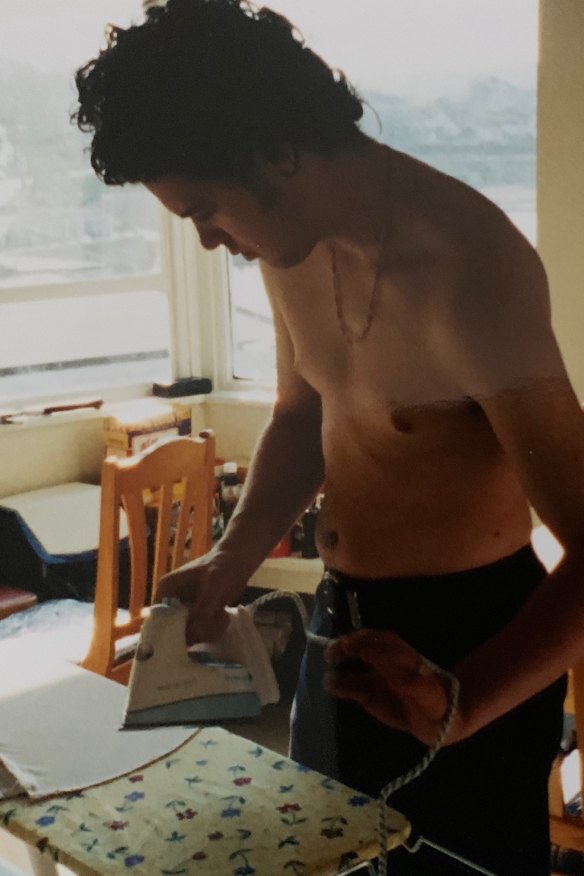
Zonfrillo ironing his whites before work in 1998.
In 1997, Zonfrillo’s visa expired, so he and Kelly returned to London, where he says he went back to work for Marco Pierre White (White denies this). Then, in late 1999, he got a call out the blue from Sawyere, at Forty One. “He’d been following my career all the way from Sydney,” he writes in Last Shot, “and had an offer for me. Forty One was struggling a bit … and he wanted me to come to Sydney and take up the position as head chef” (Sawyere says this is “not a correct depiction. Jock’s plan was always to come back to Sydney and work at Forty One once he had his visa, which we helped him obtain.“) The trip allowed Zonfrillo to get free of heroin: he took his last shot in the toilets of Heathrow Airport – giving the book its title. When he arrived in Sydney, he holed up in bed at Kelly’s parents’ house, going cold turkey, pretending he had the flu. “It was horrific,” he writes in the book. “For 10 days I was vomiting and screaming and shitting all over the place before the fever finally broke.” (Kelly left him in 2002.)
One evening in August 2002, Zonfrillo was working at Forty One, getting ready for the dinner service, when he reprimanded one of the apprentices, an 18-year-old man named Martin Krammer, for working too slowly. Zonfrillo was at the time using Sterno, a flammable gel used for keeping plates warm. In order to spur him along, Zonfrillo used a spoon to dab some of the burning gel between Krammer’s legs, setting his pants on fire. In trying to get them off, Krammer severely burnt his left hand.
When I discuss this episode with Zonfrillo and his wife, Lauren Fried, in Melbourne, they frame it as a practical joke gone wrong. “In fairness, Jock was, what, 24, 25, at the time,” Fried says. Zonfrillo adds: “It was a couple of little burns on his finger.” But Krammer’s medical report at the time noted that he had suffered “extensive burns” and “excruciating pain”, and was unable to work for three-and-a-half months. Zonfrillo tells me he called Krammer’s mother the next day to check on him, and that she said, “Oh, he’s all right. He’s out surfing.” This is a lie, says Krammer. “For one, I don’t surf and never have. I was actually at my GP’s surgery getting new dressings put on my hand.” Krammer sued Zonfrillo, winning $75,000 in damages in 2007. The same year, Zonfrillo declared bankruptcy. “He never paid me a cent,” says Krammer.
It’s previously been reported that Zonfrillo walked away from Forty One, in 2002, after becoming frustrated that Sawyere wouldn’t allow him to slip native ingredients into the dishes. In fact, as he admits in the book, Sawyere fired him after the burning incident. It was a blessing in disguise as it allowed Zonfrillo to pursue what had emerged as his real passion: native food.
Zonfrillo says he first became interested in the topic in 2001, after an encounter with a man he calls “Jimmy”, an Aboriginal busker who was playing a didgeridoo at Circular Quay, Sydney’s main ferry terminal. Zonfrillo sat down and talked to Jimmy for four hours about his people, who were from Arnhem Land, and how they cooked their food. “As I educated myself about the unfair treatment of Indigenous people,” he writes in his book, “I grew incensed to the point of physical illness.”
He decided to visit an Aboriginal community. Arnhem Land was too far, so he headed into the heart of Australia, to the Anangu Pitjantjatjara Yankunytjatjara, or APY, lands. Some 2700 kilometres later, he arrived at the tiny community of Amata, where the local elders promptly told him to leave. He drove back to Sydney, but he wasn’t giving up. Zonfrillo claims he made another six trips to Amata. Only on the seventh and final attempt would the locals talk to him. Before long, however, the police arrived: they told him he needed a permit to be there, and ejected him. In the book he writes how, on the drive out of town, he became so angry at the injustice of white men policing Indigenous land that “I pulled over, got out, sunk to my knees and hammered my fists in the red dirt. I started weeping, and then screamed with rage until my throat gave out.” (Richard King, general manager of APY Lands, says the first record of Zonfrillo visiting the APY was in 2015, when he spent two days there with Tourism Australia.)
Zonfrillo claims to have visited hundreds of Indigenous communities since then, listening to locals and gathering knowledge in an effort to create a new, authentic Australian cuisine. In 2012, he took part in an event at Margaret River, in Western Australia, showcasing Indigenous ingredients to international guests, including Danish chef René Redzepi. But one of the most important trips he took was in 2010, to Twin Lakes, near Derby, in the Kimberley region of north-west Australia, where he met a Nyul Nyul elder named Bruno Dann. Dann showed Zonfrillo his country and took him foraging, including for gubinge (Kakadu plum), jilungin (a soporific tea) and native lemon grass, which his people had spent years building a business around.
“Jock is a close friend now,” says Dann, who is 70, and so softly spoken it’s hard to hear him over the phone. “We all work together.” In 2018, Zonfrillo won the prestigious Basque Culinary World Prize for his commitment to promoting Indigenous culinary heritage; he invested part of the €100,000 (about $160,000) prize money in a processing and packing shed to support Dann’s business.
“Jock is passionate about native food,” says filmmaker Paul Ryan, who has worked with Zonfrillo in Nyul Nyul country and in Arnhem Land. “Jock has a genuine quality and strong relationships with people up there.”
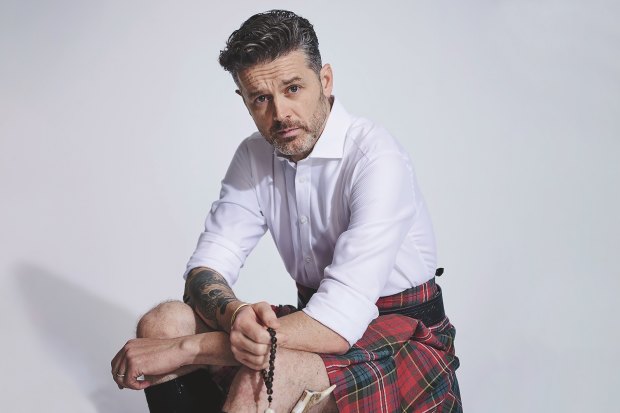
“Jock is passionate about native food,” says filmmaker Paul Ryan. “He has a genuine quality and strong relationships with people up there.” Credit: Nic Walker
As I researched this story, Zonfrillo was described to me by one chef as “a Walter Mitty type character”, prone to inflating his triumphs by tweaking history. In the book, for instance, Zonfrillo writes that in 2010 he “got head-hunted by Penfolds. They’d learnt I was in Adelaide, knew my pedigree … and offered me a job as executive chef at their flagship restaurant at Magill Estate.” A Penfolds source, who was there at the time, tells me Zonfrillo applied for the position after it was advertised.
Zonfrillo has also claimed he was the first to recognise the potential of native ingredients in culinary circles, but numerous others had long been in the field, including Jean-Paul Bruneteau, a French-Australian chef who used Indigenous ingredients in his Sydney restaurant Rowntrees (opened in 1984), as did chef Andrew Fielke in his Adelaide restaurant Red Ochre (opened in 1992), and Gayle and Mike Quarmby, a South Australian couple whose pioneering native food business, begun in 1998, engaged 3000 Indigenous people, supplying 800 chefs around Australia. Zonfrillo’s restaurant, Orana, was nonetheless a landmark, notably for the way in which it gave native ingredients a fine-dining appeal. “Orana would inevitably attract global attention if it was the best,” Zonfrillo tells me in Melbourne. “It’d create a lot of noise and people would sit up and listen.” (He says “orana” means “welcome” in some Aboriginal languages.)
Orana was actually one of two restaurants Zonfrillo launched in 2013, in a split-level property in Rundle St, Adelaide: Orana was upstairs, and below it, a more casual eatery called Street ADL (later to be renamed Blackwood). Voluble and charismatic, Zonfrillo inspired great devotion among his staff, who would regularly go foraging for ingredients. The food was lauded, both here and overseas, but bookings in the early days remained sparse. Zonfrillo covered the losses with, as he puts it in the book, “a shitload of credit cards”.
His passion for native ingredients extended beyond the kitchen. In 2016 he established the Orana Foundation, a Melbourne-based non-profit, the aim of which was to “unlock the true potential of Australia’s 60,000-year-old Indigenous food culture”. The foundation’s main goal was to compile a comprehensive database of native foods, combining traditional Aboriginal knowledge with food science and modern culinary practice. Together with its research partner, the University of Adelaide (UOA), and using a $1.25 million grant from the South Australian government, the foundation documented 1443 Aboriginal food plants, assessing their nutritional profile, their taste and flavour, and determining optimal methods of preparation and cooking.
One objective of the database was to educate chefs, thereby growing the native food industry. Perhaps more importantly, it would preserve knowledge for future generations, before elders – people like Bruno Dann – disappeared.
The UOA tells me in a statement that it has completed its work on the database, which was released to the foundation last year. The database is now being reviewed by Australia’s leading authority on Indigenous culture and intellectual property, Dr Terri Janke, to identify the Indigenous bodies best placed to serve as its custodian. Janke did not respond to requests for comment.
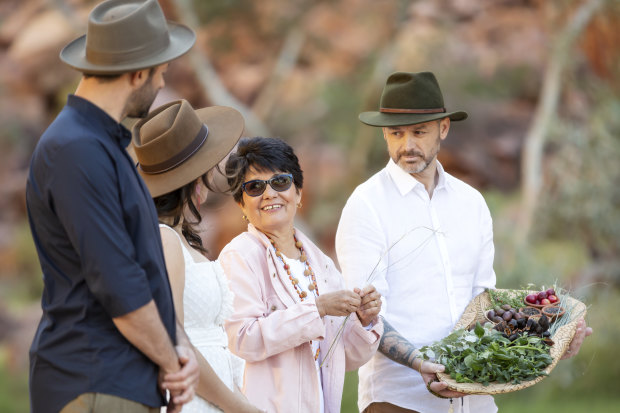
Filming MasterChef in the Northern Territory with bushfood expert Rayleen Brown.Credit: Network Ten
Arguably Zonfrillo’s biggest contribution to Aboriginal food hasn’t been through his foundation, but on MasterChef. This season, he took the show to the Northern Territory, where contestants cooked native ingredients with Indigenous elders. In June, the First Nations Bushfood & Botanical Alliance’s Rayleen Brown, who had initially been sceptical of Zonfrillo’s foray into native ingredients, appeared as a guest, bringing along acacia seeds, bush tomatoes and desert limes. “To see him on the screen is inspirational for the kids up here,” says Nyul Nyul man Albert Wiggan, who met Zonfrillo on a trip to the Kimberley in 2012. “They see him using a product that they have grown up eating all their lives, and it gives them a sense of success.”
But to some in the restaurant industry – especially in Adelaide – Zonfrillo’s TV appearances are like salt in wounds. By 2017, Zonfrillo was one of the most celebrated chefs in Australia, but Orana had yet to break even.
Nevertheless, in late 2018, he opened a third Rundle St eatery called Nonna Mallozzi, named after his grandmother. Just six months later Mallozzi closed, posting $140,000 in debts, including to suppliers, staff and the landlord. In late 2019, Bistro Blackwood closed, followed by Orana in March 2020, with combined debts of about $3.2 million, including $340,000 in outstanding rent, $234,000 owed to the Australian Taxation Office and $88,000 in unredeemed gift vouchers. Administrators later discovered that there were also hundreds of thousands of dollars in related party loans: at one stage, one of Zonfrillo’s companies had loaned another of Zonfrillo’s companies $135,000 to purchase an Audi.
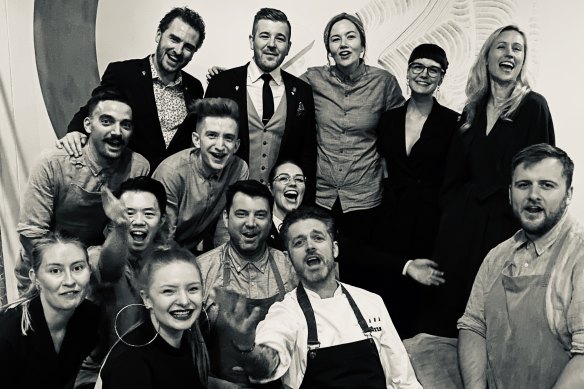
With staff at Orana ahead of its closure in 2020.Credit: Courtesy of Jock Zonfrillo
When Orana closed, just as the global pandemic began to bite, Zonfrillo blamed COVID-19. In the book, he describes the decision to shut the restaurant as “gut-wrenching”.
“But that was just bullshit,” a fellow restaurateur tells me. “Jock just used COVID as an excuse.” Indeed, administrators found that Orana and Blackwood may have been trading insolvent since November 2019. When the dust settled, creditors agreed to accept between five and 10 cents in the dollar. Later in 2020, after his restaurants closed, Zonfrillo and his family moved to Melbourne. “He just burnt these people and moved on,” this restaurateur tells me. “No one misses him down here. It’s like, ‘Good, that guy has f…ed off.’ ”
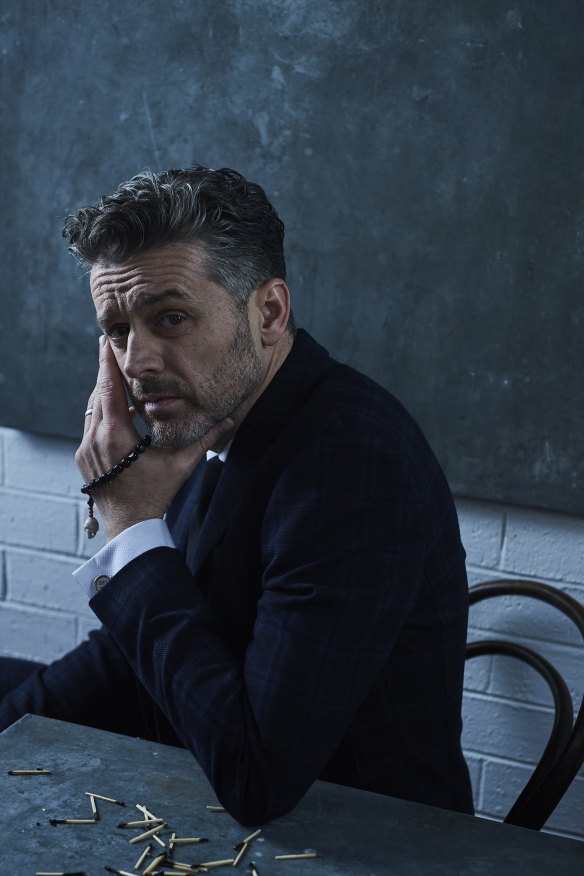
Zonfrillo with a pair of worry beads from his business: “It’s an invisible circle of protection that you draw around your body with your hand, to remind you of being safe and loved, even in the darkest times.”Credit: Nic Walker
One of the most impressive parts of the MasterChef set is the pantry. A long rectangular room running adjacent to the cooking stage, it contains everything a chef might need in the course of his or her work – rare spices, condiments and carts of fresh fruit, whole snapper, mussels and scallops, yeast seasoning, tamarind purée and shallot sauce, perhaps 50 different types of cheese, Barossa dried pears and Belgian cooking chocolate.
Contestants can use the pantry as a lifeline as they cook, often running in and out, grabbing what they need to rescue their dish, to fix any shortcomings or to add unexpected twists. Even seasoned experts resort to it. When I was on set for the “masterclass” between Zonfrillo and Andy Allen, it was Allen running in and out of the pantry as the clock counted down.
Zonfrillo didn’t need it. He stayed at his station the entire time. He had been given a set of simple ingredients, the basic building blocks, out of which he created something remarkable, something unique, something that would dazzle the audience. It was, I thought, a type of magic.
To read more from Good Weekend magazine, visit our page at The Sydney Morning Herald, The Age and Brisbane Times.
The best of Good Weekend delivered to your inbox every Saturday morning. Sign up here.